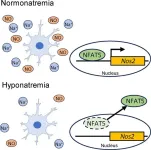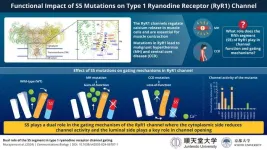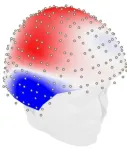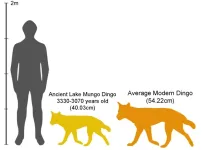Low serum sodium concentrations in blood are called hyponatremia, a prevalent clinical electrolyte disorder. In contrast to acute hyponatremia, chronic hyponatremia has been previously considered asymptomatic because the brain can successfully adapt to hyponatremia. If not treated, chronic hyponatremia can lead to complications such as fractures, falls, memory impairment, and other mental issues. Treating the chronic condition is, however, quite tricky as it has been observed that overly rapid correction of hyponatremia can cause ODS. It is a neurological disorder where nerve transmission is affected due to damage in the myelin sheath surrounding the neurons and is associated with neurological morbidity and mortality.
To ensure that hyponatremia is addressed without the complications associated with the treatment process, there is a need to understand the origin of ODS. In a previous study, Professor Yoshihisa Sugimura from the Department of Endocrinology, Diabetes and Metabolism, School of Medicine, Fujita Health University had found that microglia, resident immune cells found in the brain and spinal cord, could play a critical role in the pathogenesis of osmotic demyelination syndrome (ODS). Building on these findings, a team of researchers led by Prof. Sugimura, with Haruki Fujisawa as the first author, now explored the direct impact of low extracellular sodium concentrations (LS) and their rapid correction on microglia. The study was published in Free Radical Biology and Medicine on 21 August 2024 and is co-authored by Haruki Fujisawa and Atsushi Suzuki from Fujita Health University, among other authors. In this study, the research team demonstrated that low sodium levels could decrease specific mRNA expression and nitric oxide (NO) production of microglia.
Microglia participates in many critical CNS functions, ranging from neurogenesis to synaptic remodeling and myelination, through movement and surveillance within the brain. They can get activated in response to external stimuli or the presence of pathogens and produce several chemicals including nitric oxide that can initiate inflammation. “Understanding the rather elusive effect of chronic hyponatremia and its rapid correction on microglia is crucial as it may be a potential therapeutic target for ODS and hyponatremia-related neurocognitive impairment and mental manifestations,” explains Prof. Sugimura when asked the reason behind focusing on microglia for the study.
To investigate the effect of LS, the team chose microglial cell lines (BV-2 or 6-3). They found that a decrease of sodium concentrations of 36 mmol/L suppressed the mRNA expression of Nos2, an enzyme that is responsible for catalyzing and moderating the production of NO, which is essential for inflammation and regulating neurotransmission. This was further reflected in the experiments conducted in LS conditions where the researchers noticed decreased production of NO in microglial cells. In addition, LS suppressed the expression of nuclear factor of activated T cells-5 (NFAT5), a protein responsible for regulating the expression of genes that handle osmotic stress. Furthermore, overexpression of NFAT5 significantly increased Nos2 mRNA expression and NO production in BV-2 cells.
Moreover, when these microglial cell lines were exposed to rapid correction of low sodium concentrations, the researchers observed a significant rise in NO production. This suggests that acute correction of hyponatremia contributes to the sudden increase in Nos2 mRNA expression, and therefore NO release, thus leading to ODS pathophysiology.
The team also discovered that expressions of Nos2 and Nfat5 mRNA were also suppressed in microglia isolated from cerebral cortex in chronic hyponatremia model mice.
In summary, these findings report the impact of chronic hyponatremia and its rapid correction on the microglia, further suggesting its contribution to hyponatremia-induced neuronal dysfunctions. “Clarifying the effect of chronic hyponatremia on brain functions can contribute to the development of new therapeutics and technology to address this condition, while also lowering the occurrence of associated complications and improving the quality of life of patients,” concludes Prof. Sugimura.
***
Reference
DOI: 10.1016/j.freeradbiomed.2024.08.019
About Fujita Health University
Fujita Health University is a private university situated in Toyoake, Aichi, Japan. It was founded in 1964 and houses one of the largest teaching university hospitals in Japan in terms of the number of beds. With over 900 faculty members, the university is committed to providing various academic opportunities to students internationally. Fujita Health University has been ranked eighth among all universities and second among all private universities in Japan in the 2020 Times Higher Education (THE) World University Rankings. THE University Impact Rankings 2019 visualized university initiatives for sustainable development goals (SDGs). For the “good health and well-being” SDG, Fujita Health University was ranked second among all universities and number one among private universities in Japan. The university became the first Japanese university to host the "THE Asia Universities Summit" in June 2021. The university’s founding philosophy is “Our creativity for the people (DOKUSOU-ICHIRI),” which reflects the belief that, as with the university’s alumni and alumnae, current students also unlock their future by leveraging their creativity.
Website: https://www.fujita-hu.ac.jp/en/index.html
About Professor Yoshihisa Sugimura from Fujita Health University
Dr. Yoshihisa Sugimura is a Professor at the Department of Endocrinology, Diabetes and Metabolism, School of Medicine, Fujita Health University. He has been cited over 1,900 times and has an h-index of 24. His research focuses on areas like hyponatremia, diabetes insipidus, hypophysitis, and ODS, among others. Prof. Sugimura’s research work has contributed to the advancement of SDG 3: Good health and well-being.
Funding information
This work was supported by JSPS KAKENHI (Grant Number 20K08919 to Y. Sugimura, 22K16229 to HF), The Salt Science Research Foundation No. 22C, YOKOYAMA Foundation for Clinical Pharmacology, The Hori Science And Arts Foundation and The Nitto Foundation.
END






